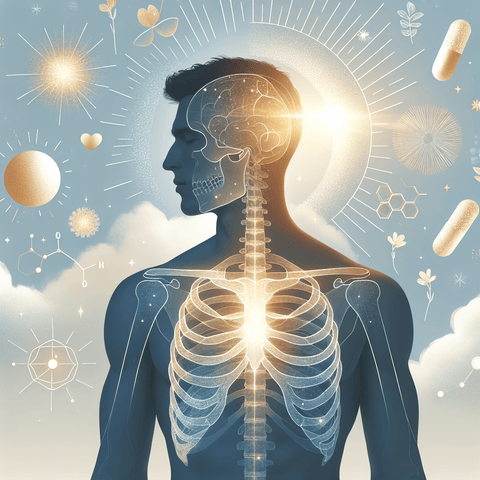Explore vitamin d3 metabolism by tracing how a signal from sunlight starts a cascade that travels through the body’s chemistry. When ultraviolet B light reaches the skin, it converts a compound called 7-dehydrocholesterol into previtamin D3, which then isomerizes into vitamin D3. This vitamin D3 leaves the skin and binds to carrier proteins in the blood, delivering it first to the liver. There, enzymes such as CYP2R1 add a hydroxyl group to form 25-hydroxyvitamin D, the main circulating form that reflects body stores. From the liver, the molecule moves to the kidney (and some other tissues) where another hydroxylation step produces 1,25-dihydroxyvitamin D, the hormonally active metabolite that can interact with cellular receptors to influence gene expression. This metabolic sequence—often summarized as vitamin d3 metabolism—rests on coordinated enzymatic steps and transport processes. The circulating 25-hydroxyvitamin D serves as a reservoir that can be further processed to the active form when the body’s regulatory signals indicate a need. The active metabolite binds to receptors inside cells, enabling transcriptional changes that integrate with other metabolic pathways. The journey from skin to a functioning metabolite involves finely tuned control points, including enzyme activity, transporter proteins, and tissue-specific expression, all of which contribute to how the vitamin d3 metabolism network operates in a given individual. Sun exposure matters because ultraviolet B photons are the initial trigger for the skin-based production that starts the entire process. The efficiency and timing of this trigger can vary with factors such as the time of day, season, and geographic latitude, as well as characteristics of the skin and age. Daylight intensity, atmospheric conditions, and even clothing or shade can influence how much starting material is available for conversion. Understanding these variables helps illuminate why the route of vitamin d3 metabolism can differ from person to person and place to place. Practical tips to engage with the vitamin d3 metabolism pathway include paying attention to your local daylight patterns and UV conditions, planning outdoor exposure during periods when UVB is most available, and recognizing that the rate of conversion can change with age and skin characteristics. Consider keeping a simple note of your outdoor exposure patterns and environmental conditions to better appreciate how sun-related synthesis fits into the body’s broader metabolic processes. This approach centers on observing and understanding vitamin d3 metabolism in everyday life without focusing on external interventions.

